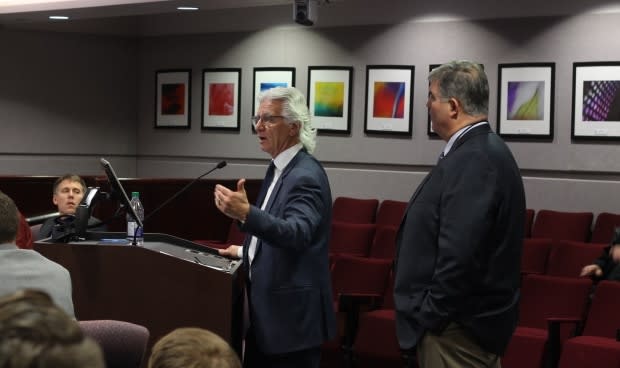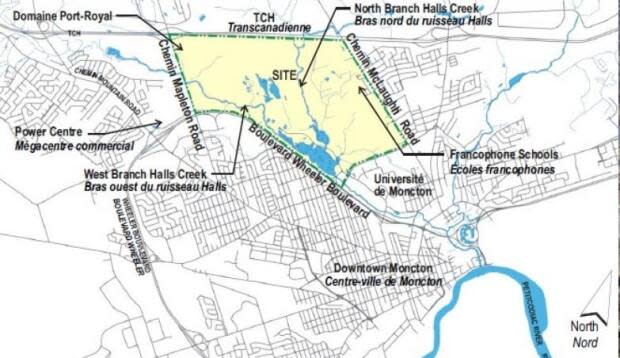Moncton hopes new bylaw prompts development in hard-to-access areas
Moncton approved a new bylaw Monday the city hopes will help kick-start development in hard to access parts of the city that needs new, and costly infrastructure.
"When you look at the city, all of the easy land has been developed," Bill Budd, the city's director of urban planning, told council Monday.
He hopes the new bylaw will help fill in the gaps, leading to development in areas previously considered hard to reach.
The new Development Charge Bylaw sets out mechanisms to pay for new infrastructure like bridges or water and sewer lines Budd said otherwise would be too costly for private developers to take on.
Previously, Budd said if the city opted not to pay for capital costs of something like a bridge, the developer would have been responsible for it before any development could start.

Budd said that meant a part of the city dubbed the Vision Lands between Wheeler Boulevard and the Trans-Canada Highway that require new roads, bridges and other water and sewer infrastructure was less appealing to develop.
The city has long eyed the Vision Lands, which includes about 1,400 acres of mostly undeveloped property, as the next big area for growth in the city.
The bylaw passed second and third reading unanimously Monday following a public hearing. No one voiced objections to the bylaw in advance of the hearing or during the meeting.
"It's too bad we didn't have this years ago," Deputy mayor Pierre Boudreau said.
For now, the new bylaw applies only to an area along a stretch of Twin Oaks Drive where a new YMCA is under construction in the city's growing north end.

However, Budd said the concepts in the bylaw would be used as the basis for future bylaws to implement the system in other parts of the city, such as the Vision Lands.
Before a bylaw is introduced, though, Budd said the city will carry out a study to determine what infrastructure may be needed. The city paid the costs of the study for Twin Oaks, but said future studies may be cost-shared with developers.
Budd listed several areas where the bylaw could be used beyond Twin Oaks and the Vision Lands. One example is the area southwest of the Junction development along the corner of Main Street and Vaughan Harvey Boulevard.
Ivan Rand Drive branches off Vaughan Harvey through the development, but stops at Jonathan Creek. Another portion starts on Main Street near car dealerships. Budd said Ivan Rand is meant to be connected, but would require a bridge over the creek. The development charge bylaw could be used to fund that bridge, he said.
The city previously used a payment mechanism that changes to provincial legislation meant could not longer apply. That prompted the city to hire Watson & Associates Economists Ltd., a consulting firm that's worked with other cities on preparing similar bylaws.
"I think this will be a model for most municipalities to do this in the future," Budd said.


